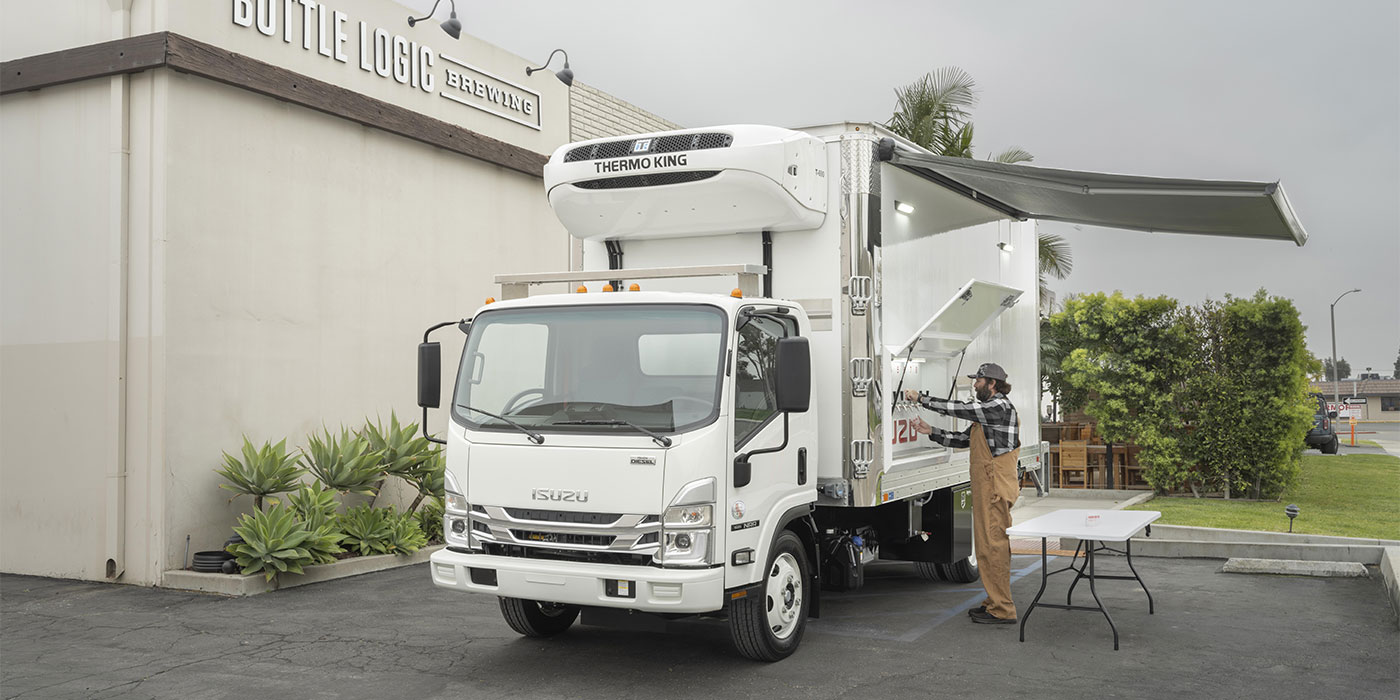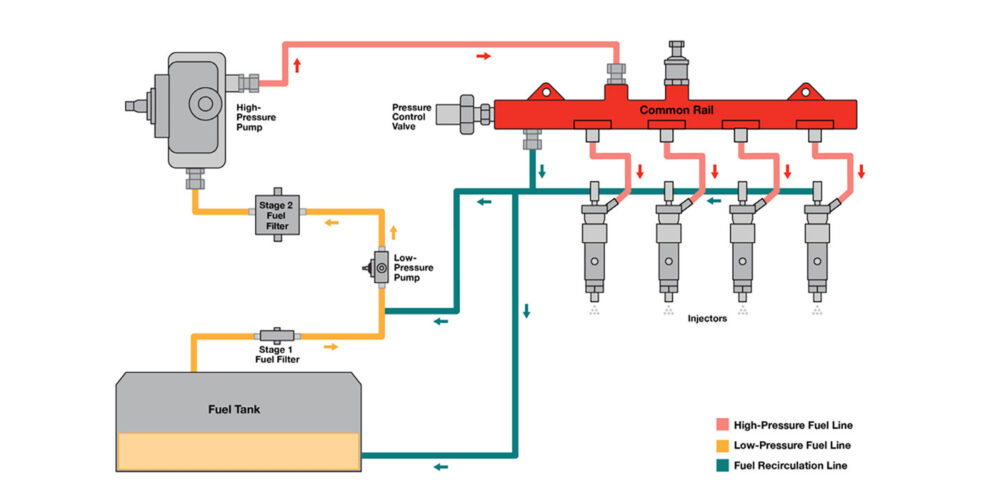Every gallon of diesel fuel contains just so much energy (usually quantified as British Thermal Units, or simply BTUs). Truck engines burn the fuel to release energy, or more specifically convert it to another form, and push the truck along the highway. Historically, the approximation has been that 1/3 of the total energy is converted to heat, which is dissipated through the cooling system. Another 1/3 passes through the exhaust system as heat, and the final 1/3 is converted to mechanical energy, which turns the crankshaft and ultimately is transferred through the driveline and tires as torque to drive the truck.
Higher engine running temperatures have reduced cooling system heat losses. Also, exhaust heat recovery devices such as variable geometry turbochargers, turbo compounding and more efficient intercooling all have reduced heat losses through the stack(s). Lower average engine speeds, flatter torque curves and other fuel delivery system advances have further contributed. The net result is that modern highway diesels now convert approximately 40% to 45% of the fuel energy to useful work of generating driveline torque. Much attention is currently being directed to pushing this number closer to 50%—quite a technology feat in view of the latest emissions restrictions.
On the energy requirement side, the driving force must overcome three primary components. The traditional approximation has been that aerodynamic losses account for 50% of the total drag, mechanical friction losses account for 16%, and overcoming tire rolling resistance accounts for the remaining 34% in typical over-the-road applications. It is important to note that these figures assume a load of approximately 72,000 lbs. and a speed of 65 MPH. Also important is that the aero losses tend to increase as the square of speed (2x speed = 4x loss), while the friction and tire losses tend to increase linearly (2x speed = 2x loss). Therefore, reducing aero losses (drag) quickly increases the role that tires play in the overall effort to improve fuel economy.
Much of the aerodynamic “low hanging fruit” has been harvested over the last several decades. Closing the cab back to trailer front gap, cab side extenders, front air dams, lower side/fuel tank fairings, flush mounted turn signal and clearance lights, and lower drag mirrors are some examples. It is now clear that reducing under-trailer turbulence and minimizing the low pressure area immediately behind the trailer is the most beneficial for reducing aero drag. Also, some truck manufacturers are researching ways to lower truck and tractor drag coefficients (typically at 0.6 for all but the most recent designs) by substantially changing cab profiles. These efforts range from simply increasing windshield rake angles to lowering frontal shapes with such major innovations as flat/horizontal engines and radiators mounted parallel to the frame instead of the current vertical mountings. It is well established that lowering the truck reduces the turbulence-prone area between the truck bottom and the road surface, which helps fuel economy (remember that 22.5-in. low profile tires deliver better fuel economy than 24.5-in. models, with comparable engine speed/road speed gearing). However, ground clearance for grade crossings and normal road access height differences limit these opportunities.
The bottom line of this current work is that tire rolling resistance (RR) is becoming more important than ever, especially on newer, low aero drag vehicles. Stated a different way, low RR tires contribute more toward enhancing fuel economy on trucks/trailers that are energy efficient than other tire improvements. Another thing to keep in mind is that tire RR has two major components, namely the basic casing and secondly, the tread. The tread can account for approximately 30% to as much as 50% of the total tire RR, with the primary difference resulting from tread design (e.g. lug vs. rib) and tread depth. Low RR casings should be considered for all new tires, including trailers, especially if they may be retreaded for use on drive axles later. Tire managers also should work with their retread suppliers to ensure that all new treads have rolling resistance matched to fleet needs. This is another example of constant change in our industry, even to the point of redefining some of the traditional basic beliefs.













